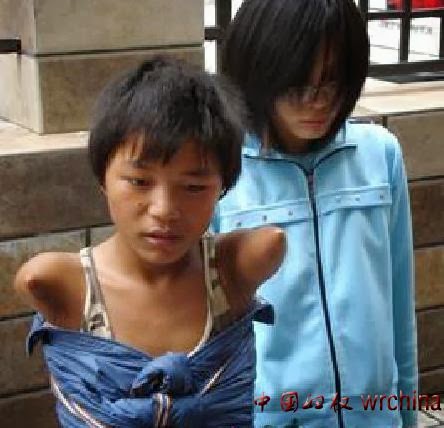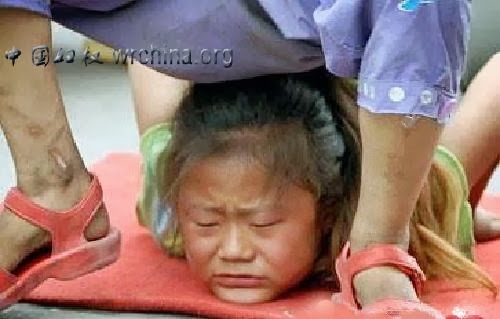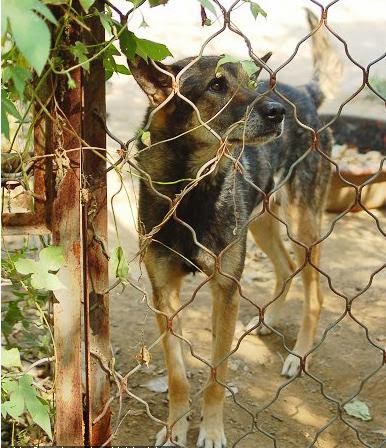WRIC Report on Child Trafficking in China
WOMEN’S RIGHTS IN CHINA 2011
Child-trafficking has become a severe social problem in China. It has become an extensive and lucrative illegal trade. The government’s One Child Policy is the root cause of the problem which directly and indirectly created and stimulated the “market” for trafficked children. Criminal groups made up mainly of members of the same family (*a) go into vast areas of the Chinese countryside and kidnap or barter children and young women for sale in other areas. 10 years ago, the children were mainly sold to coastal provinces like Fujian and Guangdong. The buying market has quickly expanded north. The areas where the children came from have also expanded from the southwest inland mountain areas to the northwest and Central Plains areas.
The Chinese government has a longstanding policy of secrecy over statistics of the missing persons. It has never published the real numbers of the nation-wide child-trafficking problem. As the problem increased in severity, under pressure from foreign governments and NGO’s, to mend social stability and its imago, the Chinese government initiated five separate “operations” combating human trafficking. During each “operation”, public security organs would disclose relevant data. However, these data were incomplete and unorganized. Little cooperation existed between the central and regional governments and different departments. After “processing” through different government agencies, the data on missing children became even more convoluted and could not give accurate figures on the missing and trafficked population. Civil society efforts to compile data have been hampered by the expanse of the country and lack of resources. However it is possible for WRIC to give a rough estimate from our own data and governmental figures.
1. Data on Rescued Children
According to the Ministry of Public Security, since the April 2009 “Battle to Establish the National Anti-trafficking DNA Database”, the nation’s public security organs took in blood samples of suspected trafficked children. As of September 20, 2010, 130,000 samples had been collected from the children (* b), along with blood samples of 34, 000 parents of missing children. 813 abducted children were found to be matches in this way. That is, only 6.2% in the database matched the sampled parents. 93.8% remained unclaimed. July 1,2005, Xinxiang, Henan police rescued 35 babies, only 1 was reclaimed, 34 children did not find the birth parents, accounting for 97% of the total; Ministry of Public Security published in 2009 the first rescue of 60 children (* d). 55 so far could not find their birth parents, accounting for 92% of the total; On June 3,2009, Wuhan Railway Police uncovered the baby trafficking gang headed by Yu Li Hong of Yunnan Province. 46 infants were rescued. None were claimed, 100%; Shanwei police early in 2010 detected a serious case of baby trafficking, rescued 26 children, of which 11 remain unclaimed, 58% of the total; On September 5,2010, Anxi, Fujian police rescued 41 trafficked children. None were claimed, 100% of the total. In a small village in Putian, Fujian, WRIC helped reunite three women who were trafficked as young girls with their birth families. None of the three were in governmental databases. Even more shockingly, in a village in the same municipality, almost every family had bought children from traffickers. Local police and census takers always looked the other way. Neither did they help the suddenly appearing children in searching for their birth family in any way. From these instances, it is clear that child trafficking is far graver than the 130,000 number of the Public Security Ministry or even the 6.2% reclamation rate of its database suggested.
2. Civil Society Activities in Child Search and Rescue
In Mainland China, child trafficking first occurred in the southwestern provinces of Yunnan, Guizhou and Sichuan. It has now spread to nearly all provinces and autonomous regions, with the possible exception of Tibet. From databases maintained by civilian non-governmental websites, Henan has become the province where the problem of missing children has become the most severe. Numbers in Guangdong, Fujian, Guangxi, Shaanxi, Hebei provinces are also skyrocketing. In the December, 2010 Huijiawang (Return Home Net) activities in North China, it was discovered that kidnapping of girls had increased markedly in the last two to three years. In regions of Henan, Hebei, Shandong, Shanxi and Shaanxi, rural villagers bought child brides in large numbers. The price for such trafficked children had also increased from several thousand yuan in the past to twenty or thirty thousand. Girls in their teens and young women were also targets of kidnapping.
The main method by which parents of missing children search for their lost children is to travel to various places with their own resources, if possible with the help of extended family. The parents often post notices of their missing children on websites and major train stations. The effort quite often exhausts the resources and life savings of the families. The Return Home network (www.crchina.org), affiliated with Women’s Rights in China has maintained contacts with various regional organizations of missing children’s parents since its founding in 2008. More than 4,000 families looking for their missing children have registered on the website. In three years, with two grants from All Girls Allowed, crchina.org organized several large scale anti-trafficking activities in severely affected provinces. During these activities, the Return Home Net tried to avoid all harassment by local police, gathered representatives from various provinces for parental victims for conferences and invited attorneys for legal advice (*d). Convoys plastered with pictures of missing children traveled through eight provinces and held educational exhibits in markets and towns, attracting widespread attention from the public. Although the expense was heavy, through the crchina.org platform, parent volunteers from dozens of provinces helped many trafficking victims to reunite with their birth families. Mr. Guo Gangtang of Shandong and Mr. Chen Fuyu of Guizhou succeeded in uniting several families through their travels although they could not find their own missing children.
However, the strength of the civil society efforts was thin. The parent volunteers were under tremendous financial pressure and harassment of local governments. In September, 2008, more than 40 parents petitioned China Central Television to tell their stories. They were arrested and taken under guard back to their localities for further detainment. In January, 2010, three vehicles and representatives from five provinces looking for missing children were detained in Taiyuan, Shanxi.
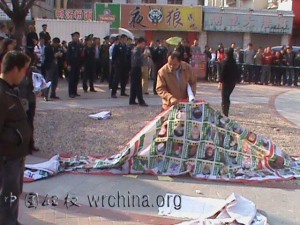 |
|
January, 2010, a parent volunteer is picking up posters torn by local police. In the background, more policemen are chasing away volunteers.
|
 |
|
Detainment for over 20 hours in the garage of the local police station.
|
3. Civil Society Missing Children Websites
As the Chinese government had not set up dedicated agencies to find missing children and child trafficking is a
At present, dozens of missing children sites exist in China. Each site is registering information on missing or abducted
 |
|
An anti-trafficking exhibit organized by WRIC in Fujian, 2009.
|
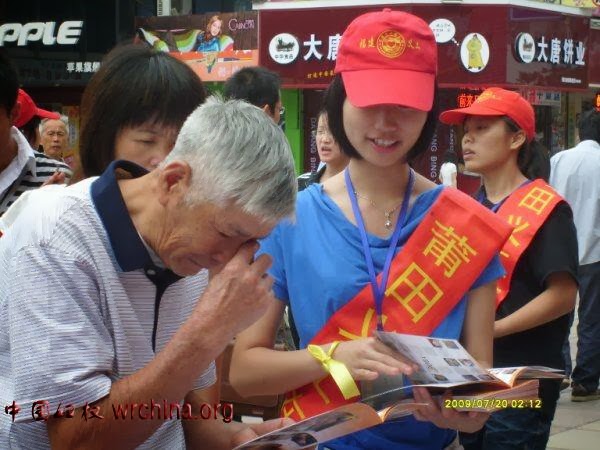 |
|
Volunteers educating the public in Fujian.
|
a. A large number of trafficking occurred in the rural areas. There is often no photo of the child, let alone the funds to
b. One -child policy and gender discrimination inhibit rural families from reporting missing children, particularly girls. Many
families prefer boys. The kidnapping of a girl obviates heavy government fines for “illegal” births and opens the opportunity for
additional children.
c. Many families give up after long periods of their little loved ones’ disappearances. WRIC volunteers found two women in Putian, Fujian whom they were kidnapped 24 years ago from Guizhou. Neither of them were in the case files of Guizhou police or
government. Their parents never officially registered their disappearance with the police and gave up long before. Rural residents
d. Families sometimes break up after the child had gone missing. Both parents might hide their past history after
4. Street Children As Entertainment
Recently, Professor Yu Jianrong of the Academy of Social Sciences, Institute of Rural Development, started the blog
Some of government orphanages also engaged in the child trafficking trade. They took in “illegal” births and abandoned
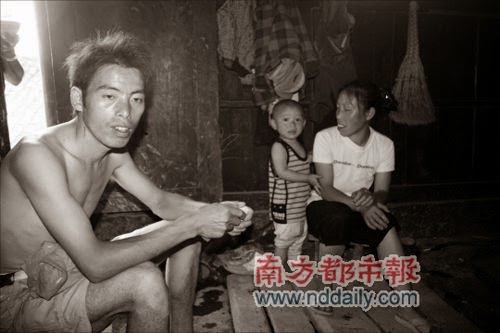 |
|
The newborn girl of this farm family in Zhenyuan, Guizhou was taken by government orphanage in lieu of a heavy fine.
|
 |
|
This girl entered Beijing Sun Village in June, 2007. She disappeared in 4 days.
|
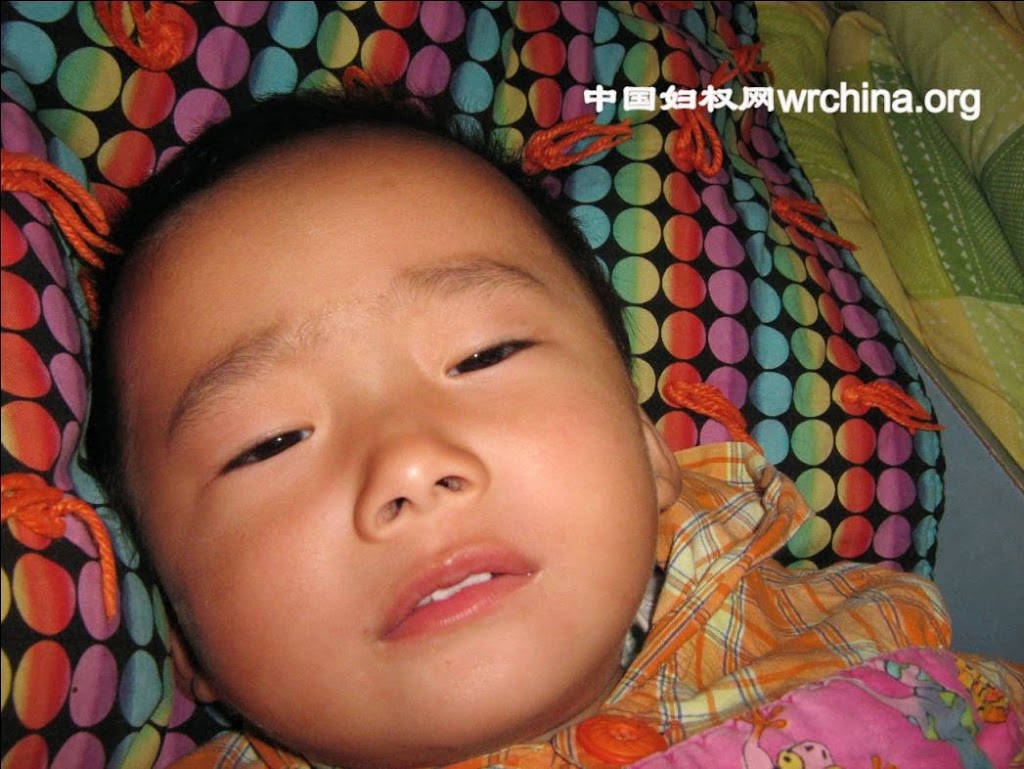 |
|
This three-year-old child, photographed in Beijing Sun Village on October 18, 2007, disappeared a week later.
|
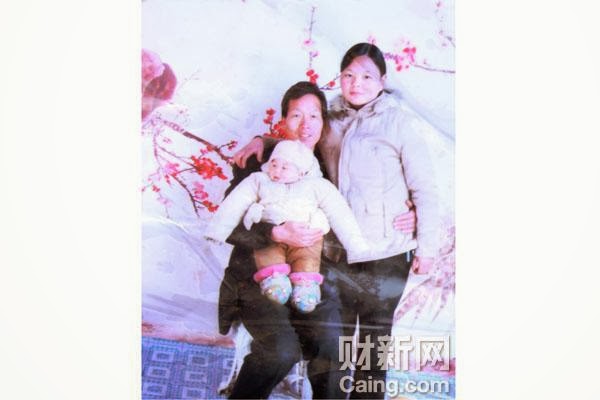 |
|
Yang Libing, wife and daughter Yang Ling in a family portrait before Yang Ling was abducted by Birth Planning officials.
|
Conclusion:

